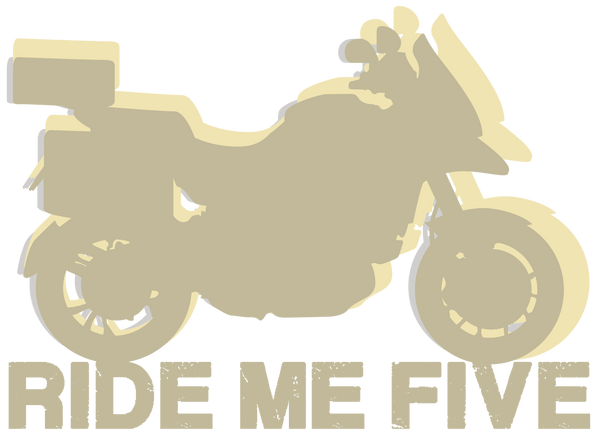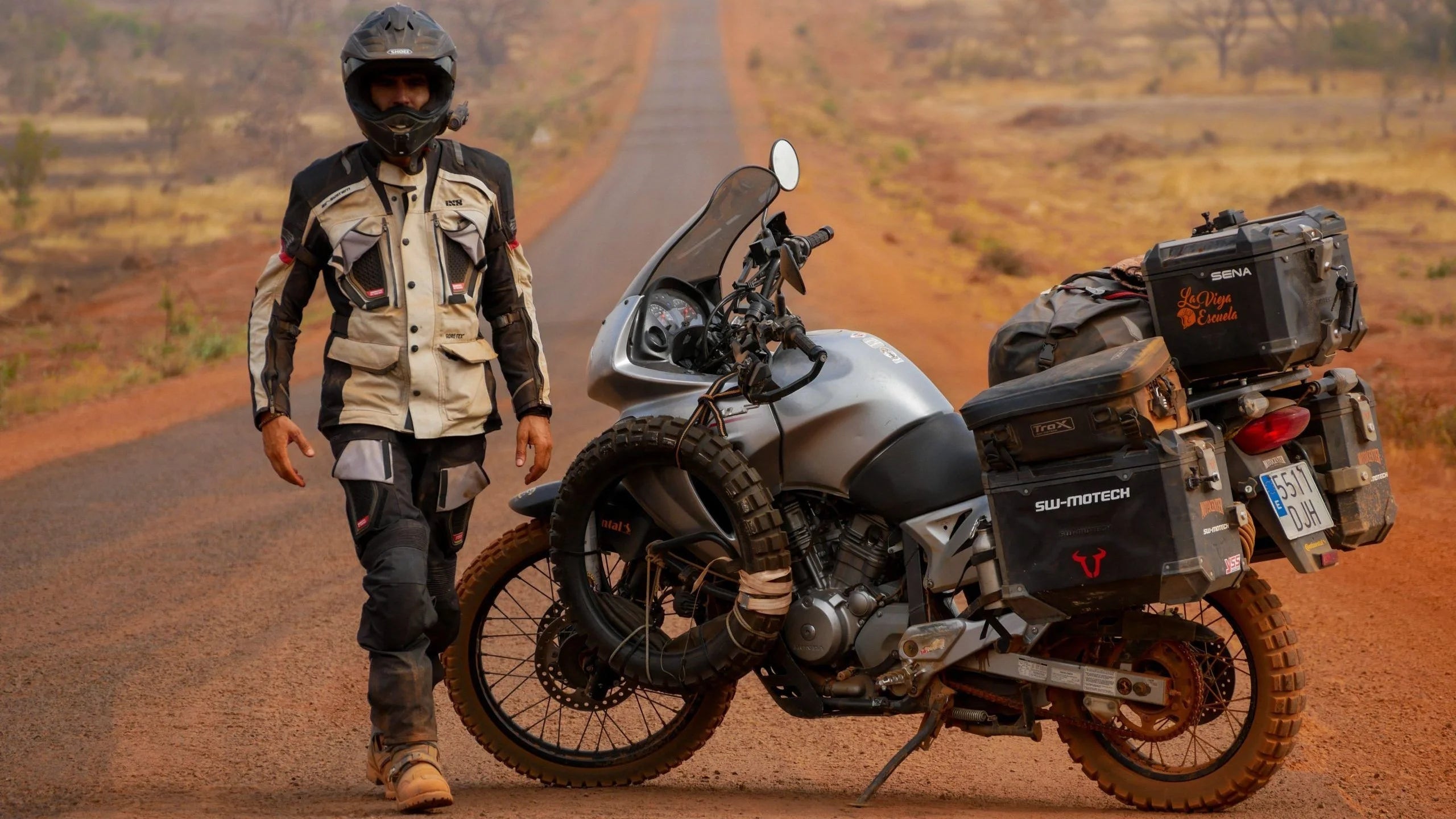
AFRICA
This trip is the dream of a lifetime: since I was little I have been passionate about adventures and motorcycles. Over the years I have made various trips, but none as ambitious as the one to come. The idea is to get around the world on my motorcycle for as long as necessary. If you want to know a little about me, click here.
In my opinion, closing a route before leaving would be crazy. The only thing I am clear about is the motorcycle to use and the strong ambition to travel and explore the five continents.
This is a project that has been forged over the years, day after day and kilometer by kilometer. There has always been a small flame burning inside me. With the passage of time it has become more and more intense, to the point where I couldn't help but launch into exploring the exciting world in which we live. I'm going to change my house for a tent, family and friends for the people on the road, and the office for the road. The only thing I keep is my motorcycle, which will be my faithful shield during many adventures.
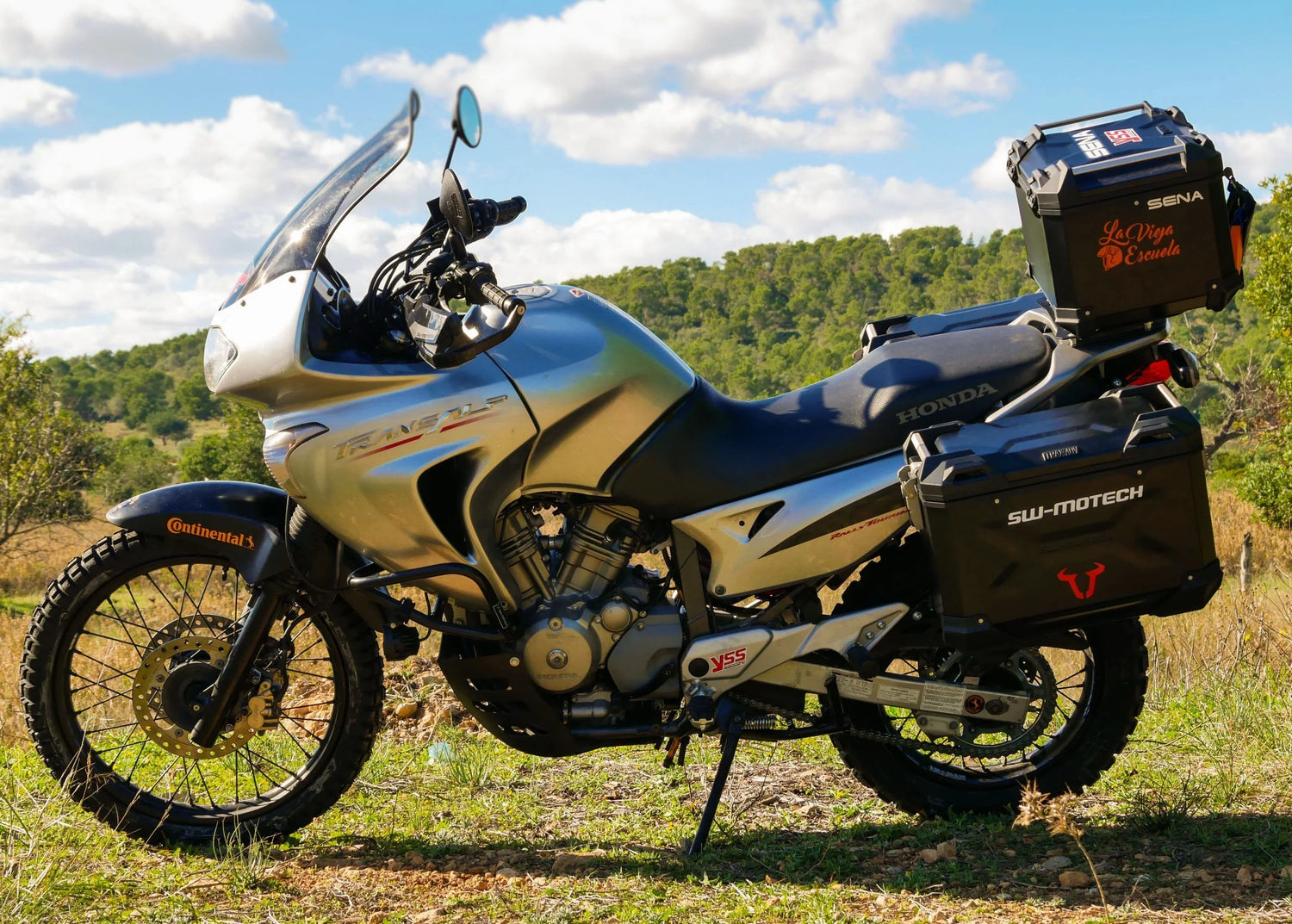
THE MOTORCYCLE FOR THE GREAT TRIP
The motorcycle on which I am going to face this adventure is a Honda Transalp 650. It is not a state-of-the-art motorcycle, quite the opposite. It was manufactured in 2005, powered by carburetion and with simple but robust mechanics. I have decided on it because, among the motorcycles that exist on the market capable of making a trip of these characteristics, it stands out for its reliability and its low price. These two requirements, especially the first, are very important to me on this journey.
Another notable feature is its good loading capacity, and this motorcycle has enough power to maintain normal travel rates. A fundamental thing for me was to have spoked wheels instead of aluminum rims. In front it is 21″, which is good for going through the countryside. The ground clearance allows you to travel on tracks and even broken roads, always taking some caution. As for autonomy, it has a tank of almost twenty liters. This will be enough for most places, but I will carry a jug with several extra liters in case it is necessary. As for the weight of the bike, it is not particularly light, but not so heavy that I couldn't get it.
In general terms, it is a very simple, robust, versatile and economical motorcycle. I hope he behaves as well as he has so far and that we are able to have many adventures together.
MOTORCYCLE PREPARATION
I like to tinker with my motorcycles, so I have improved some elements and added a couple of extras that I considered important for this trip. I would have liked to prepare it a little better, but once again the budget is limited…
- Tires : for an adventure of these characteristics you have to choose them very well, since they are the element that keeps the motorcycle attached to the ground. I have opted for knobby tires with relatively high durability . They are more focused on the countryside than on the asphalt, since my intention is to do as many kilometers as I can on the track. Even so, they will be effective and reliable in any circumstance and terrain.
- Review : the review and tuning have been carried out by the guys at Moto Center Mallorca , who have been fixing, preparing and customizing motorcycles for more than twenty years. They have that touch of design and craftsmanship that very few preserve. In fact, they are not limited to the basics, but are capable of doing wonders with each motorcycle. They have done an excellent job, adapting the new suspensions and all the accessories that I have decided to put on the Transalp before starting the trip. For me, more than a workshop, it is a dream factory.
- Air filter : for convenience I use a washable air filter that does not need to be replaced . Simply, every few kilometers, you must wash it and re-impregnate it with its oil. It is a great advantage, since you forget about having to get the spare part along the way.
- Suitcases : I have decided on the TRAX ADV from Sw-Motech, aluminum suitcases that provide great resistance and comfort. They are sealed with a rubber lip to prevent water and dirt from entering. Additionally, the anchors come pre-installed and are very easy to assemble. Although they are not too cheap, I consider them essential due to the advantages they offer: rigidity , good load capacity and safety . Regarding the latter, metal locks protect your luggage and help you get rid of it without too many worries. The only negative point is that these cases make your motorcycle wider and heavier and, in the case of the Top case, it suffers a lot of fatigue on the "uglier" tracks. That is why it is advisable to travel light, with little weight.
- Fenders : they are from the Sw-Motech brand, moderate in size and quite discreet. So far they have held up perfectly.
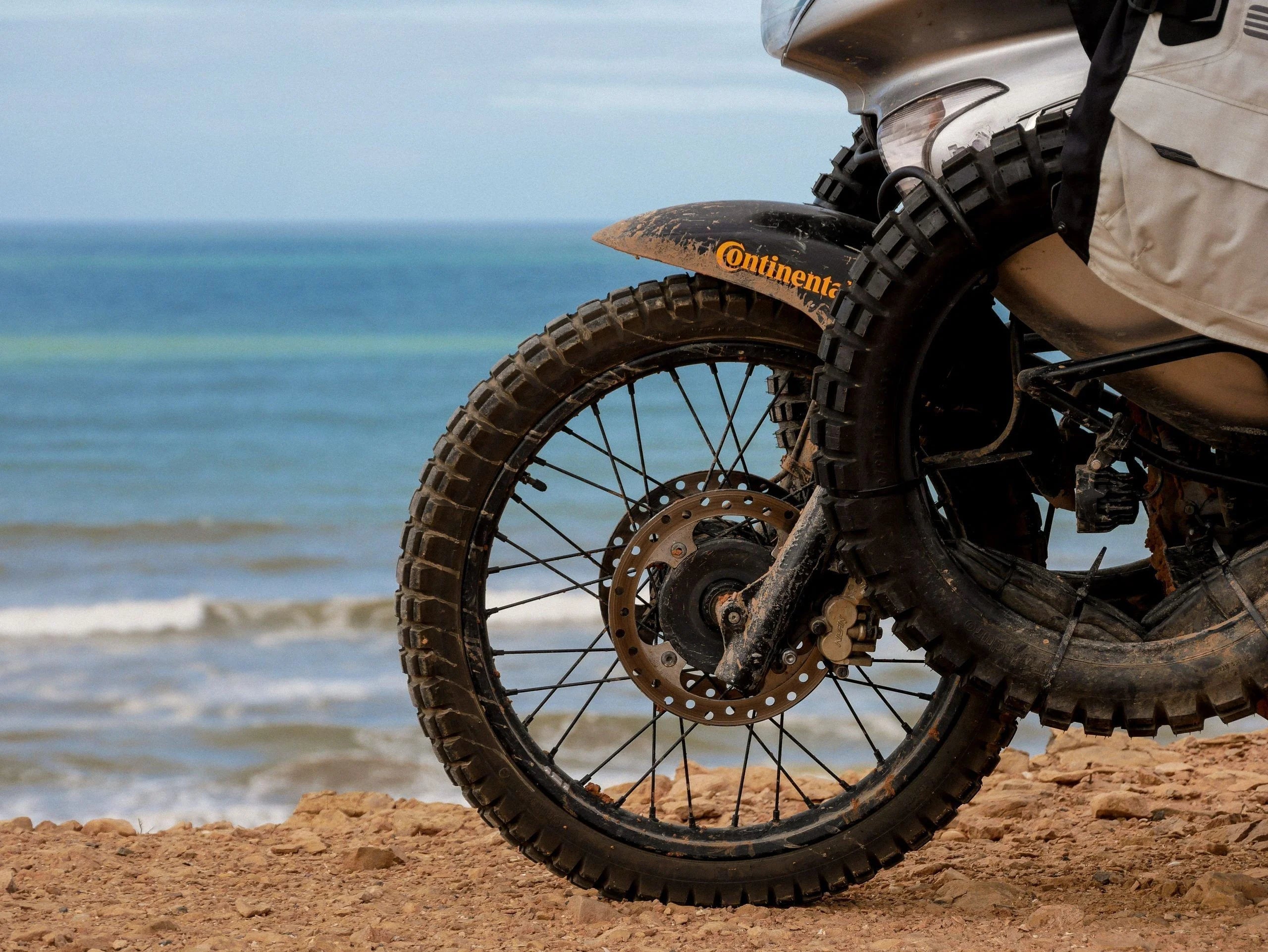
- Central stand: it is essential for traveling, and I would dare say that for the day-to-day life of almost any motorcycle. It allows you to carry out maintenance tasks that would be very complicated without it, such as greasing the chain, repairing a puncture, changing the tires and much more. Sw-Motech is one of the few brands that manufactures the center stand for the Transalp 650.
- Dome: the original was too small, so I ended up buying a tall dome. It protects better against wind and rain , providing more comfort. Unfortunately it is somewhat cumbersome, and in summer it takes away that little air that is so appreciated. I've only had a few miles on it, so I haven't drawn a clear conclusion yet.
- Complementary lights : the lighting on motorcycles is usually quite limited, even more so on the Transalp and others of its generation. For this reason I have chosen to add some extra headlights. The Sw-Motech EVOs are quite easy to assemble and give you that point of light that the stock motorcycle lacks. It helps you see and be seen, which is essential when you ride a motorcycle.
- Crankcase protector: highly recommended, and even essential in broken tracks . The Transalp comes with a plastic one. It's fine for small scratches or small stones, but if things get serious, you need a metal one. Once you assemble it, the times it has saved you from a possible crankcase breakage become "recorded" in it. In my case there are already two, and before even starting the trip! I wear the one from Sw-Motech , very robust and resistant.
- Raised fender: it is not advisable to leave the fender as it comes on the motorcycle. It is only one or two centimeters away from the wheel, so as soon as it gets dirty, it sticks to it and covers the lugs completely. It is then that the wheel locks and stops rotating. To avoid this, I can think of two solutions: the first is to remove the fender and the second, which is the one I prefer, is to move it a few centimeters away from the wheel . In my case I have made some sliding metal plates that separate it between three and five more centimeters, depending on the need.
- Folding brake and shift pedal: The Transalp comes with fixed pedals. The problem that this entails is that, in the event of a fall, it is very easy for these components to bend or even break. Upon further investigation I discovered that the Africa Twin of the time had folding pedals and were compatible with the Transalp. The gear shift is a centimeter longer, which is appreciated with the boots. When the ends of the pedals are folded, it is much more difficult for them to suffer damage.
- USB socket and lighter: I have incorporated these two elements to charge electronic equipment along the way, since my intention is to camp very frequently. This way I have access to electricity whenever the bike is running. For a very small price, I have obtained help that I now find myself unable to give up.
- Shock absorber and fork springs: as much as we don't usually give them the attention they deserve, for me suspensions are one of the most important parts of a motorcycle. The ones that come with the Transalp 650 have a fairly acceptable behavior. The front springs are too soft, and on the track the deficiencies are more noticeable. Since I expect to travel thousands of kilometers on all types of roads, I have decided to change the suspensions for YSS suspension . It is a brand that is not yet well known in Spain, but little by little it is making a name for itself worldwide. I have asked for suspensions slightly higher than the original ones , with the idea that the bike gains a few centimeters of "ground clearance." The front springs are progressive , and the difference in performance compared to the stock set is abysmal.
MAINTENANCE AND SPARE PARTS
For economic reasons and mere romanticism, I will carry out maintenance and repairs on my own.
No motorcycle is perfect and each model tends to fail in the same places, so the ideal is to know which parts tend to break down and be prepared when this happens. I take various utensils and tools, as well as some spare parts that I will need during the trip.
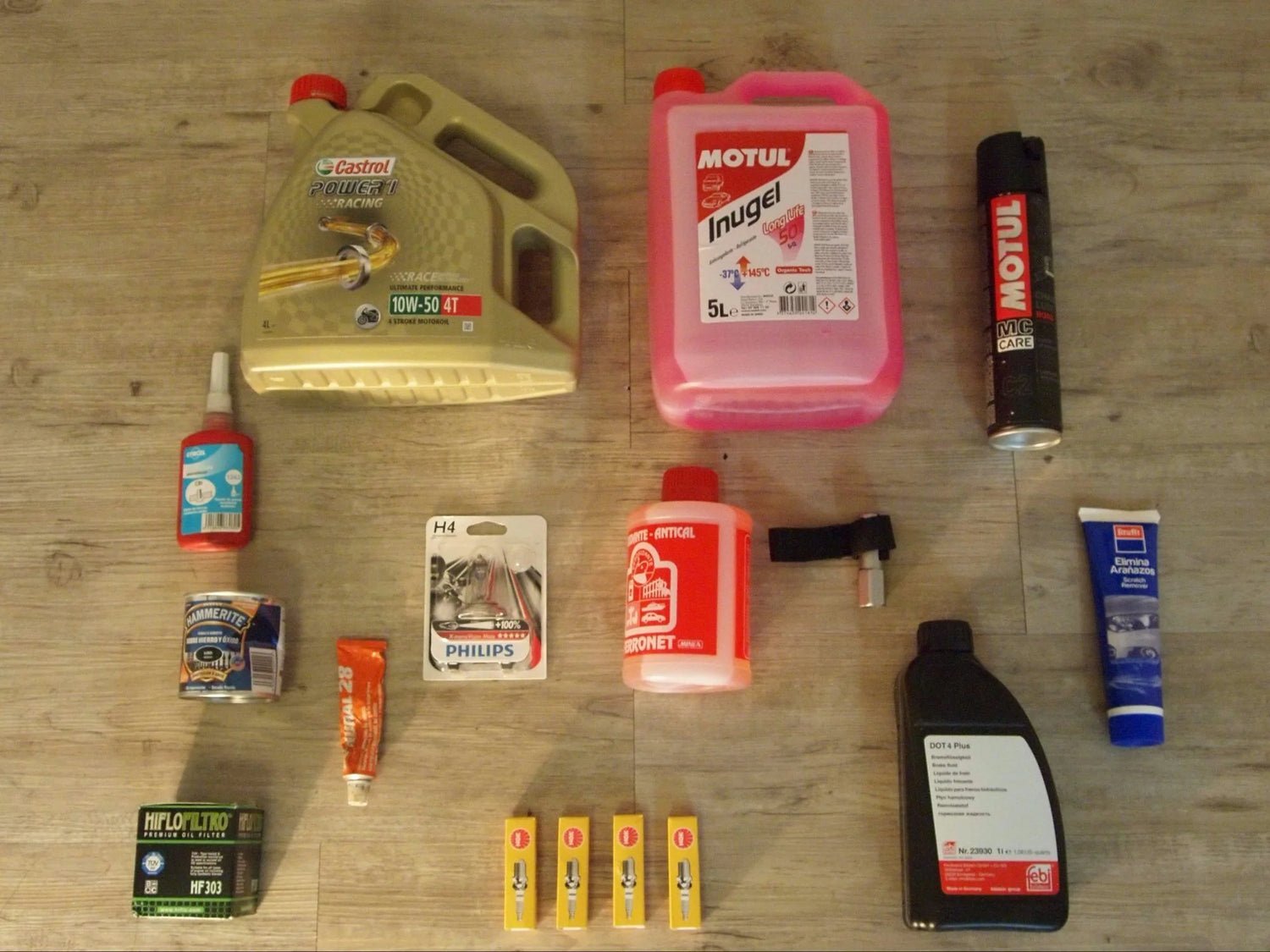
The list of spare parts that I take is:
- Oil filter.
- Clutch cable.
- Forwarding cable.
- Throttle cable.
- Front and rear brake pads.
- Odometer fuse (usually fails on the Transalp 650)
- Air filter cleaner.
- Chain grease.
- Extra set of tires.
- Wheel bearings.
- Plugs.
- Both brake and clutch levers.
- Clutch plates.
- Reinforced front and rear cameras.
- New gaskets for valve adjustment.
- Brake and gear shift pedal.
- Fork seals.
- Light bulbs.
- Drive pinion washer (usually fails on the Transalp 650)
- A pair of spare radios.
And if I ever need another spare part or a specific piece, I'll check Parts Europe, that's where I always find everything I need at any moment.
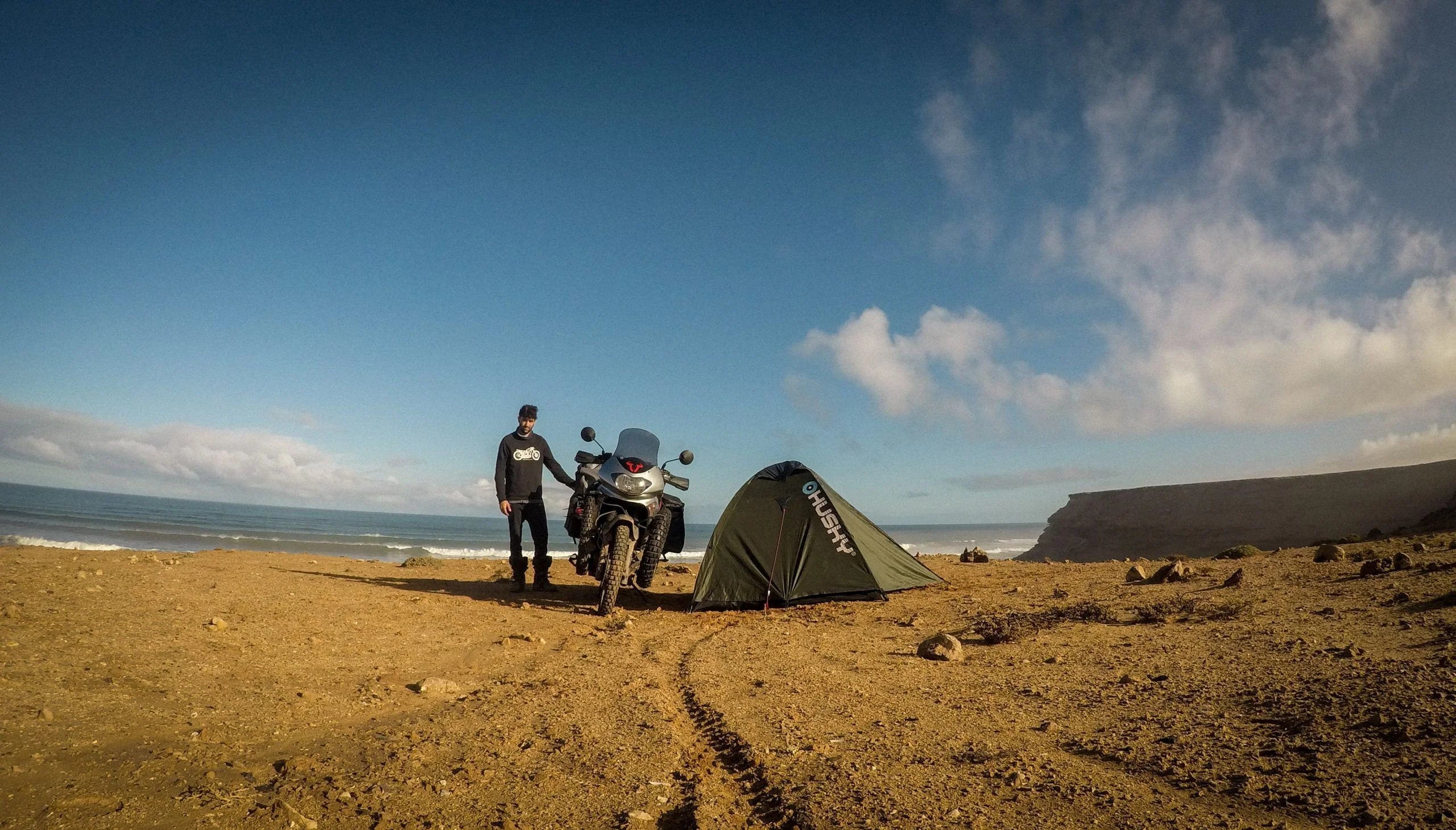
PLANNING
In my opinion, the most important thing is to be clear, know why you do it and be able to sacrifice some things to pursue your dreams. I think that, with this in mind, the most difficult step has already been taken.
My case, like everyone else, has presented complications. Not only have I saved little by little while I finished my studies, I have also had to give up hobbies that I previously loved. I have been able to talk to people who know the countries through which my route passes, spend many hours on the Internet and learn mechanics or first aid .
THE ROUTE
As I have said before, planning a route with such characteristics would kill part of the adventure. One of the things I like most about traveling by motorcycle is being able to decide “where to” and “for how long” almost every day. Having the freedom to set the course that I most want without rushing or conditions.
The only thing I know is that I intend to travel all five continents. I'll start with Africa , probably the purest and also the most difficult. The idea is to cross it in a southerly direction, starting with the west coast until reaching South Africa. Once there, I would like to follow the direction of the North Star, go up the "east" coast and reach Egypt .
Then I would like to connect Africa and Eurasia by ship. The way I see it right now, Turkey would be my door to the huge Asian continent . I have the rest of the route in my head, but I prefer to focus on this section and let the rest come with time.
It is clear that many things can happen along the way, so what I do is stay calm and open to possible changes.
CAMPING AND SURVIVAL EQUIPMENT
With a goal like this, I think it is important to bring decent material. Due to my limited budget, it cannot be the best on the market, nor from top brands, but by searching and asking around I have been finding quite quality alternatives at affordable prices.
One of the main challenges of motorcycle travel is the limitation of space and weight. It has been an essential condition that luggage is reduced to the minimum and essential.
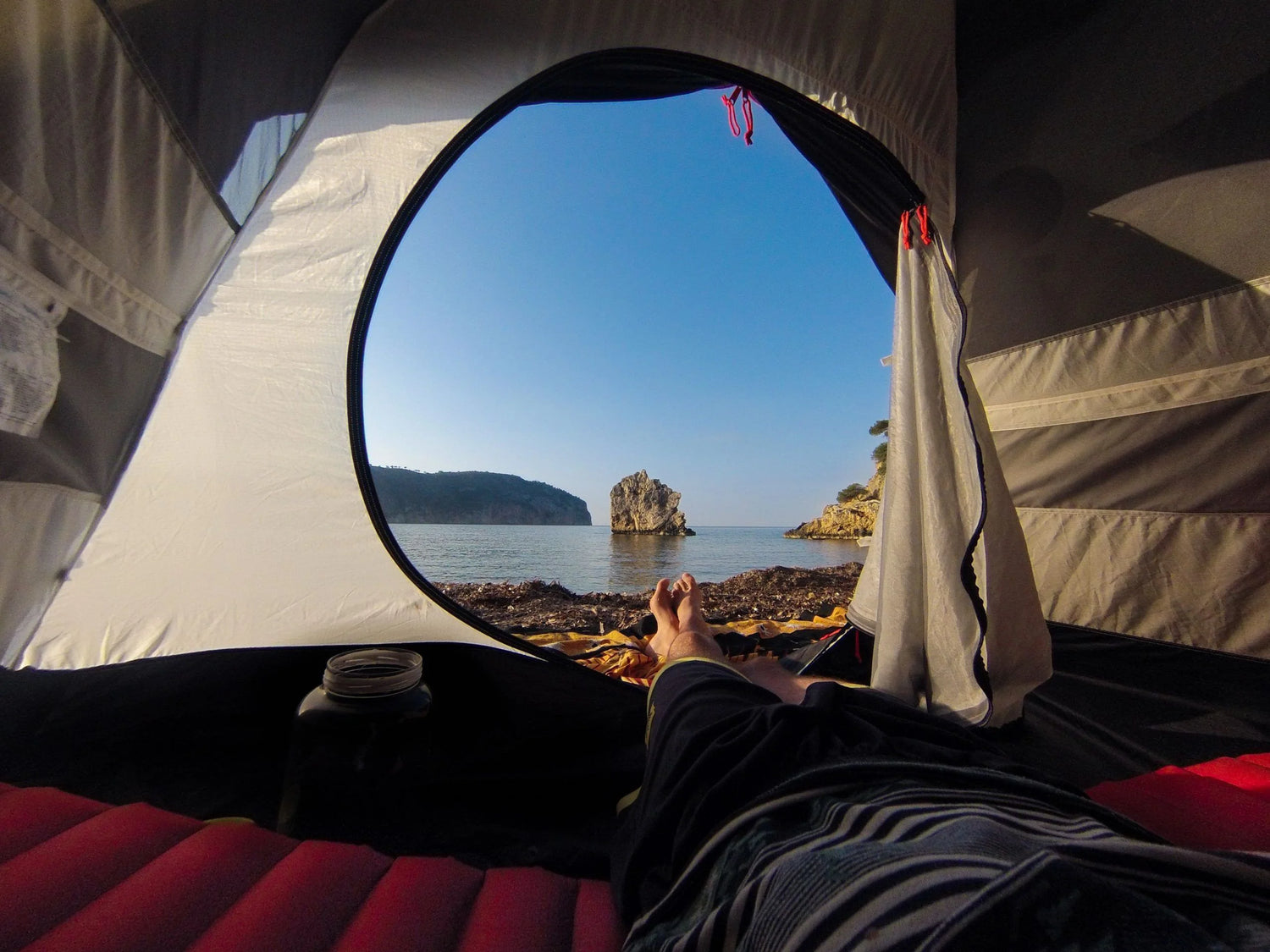
- Tent: it should be small and light , with a high degree of waterproofing, with good breathability and made of resistant fabric. I have a mid-range one with good waterproofing and about 2 kg in weight.
- Sleeping bag: as with the tent, excesses must be avoided. In my case it is a down bag that weighs approximately 1 kg and with a comfort temperature of 0ºC . Inside the tent the heat is retained better, but for extremely cold nights I have a fleece inner sheet-bag . This, apart from being more hygienic (it can be washed), theoretically provides about 10/15 extra degrees . From what I'm seeing there aren't that many, at least in my case, and it only adds about 5 degrees . Another advantage is that it allows you to use it as a summer bag on hot nights.
- Mat: The mat I have chosen is inflatable and lightweight. It fits in one hand and, once inflated, is 9 cm wide and 195 cm long. It has insulating fabric inside , something essential when camping, as it prevents you from losing heat through contact with the ground.
- Stove: I take a gasoline stove because of the easy access to fuel. It is very versatile, working with several substances, and will allow me to cook and eat hot.
- Water purifier: I have a water purifier cane of the Sawyer brand, theoretically ready to purify about 1000 liters of water . It works by direct suction and eliminates most bacteria and protozoa, it does not take up too much space and can be very useful if necessary. The most important thing I carry on the motorcycle is water.
- Flint: The advantage of flint is that it works in almost all weather conditions and does not matter if it gets wet.
Of course I carry a knife, lighter, rope, duct tape and all those things that are always a great help when doing any mess.
MOTORCYCLE EQUIPMENT
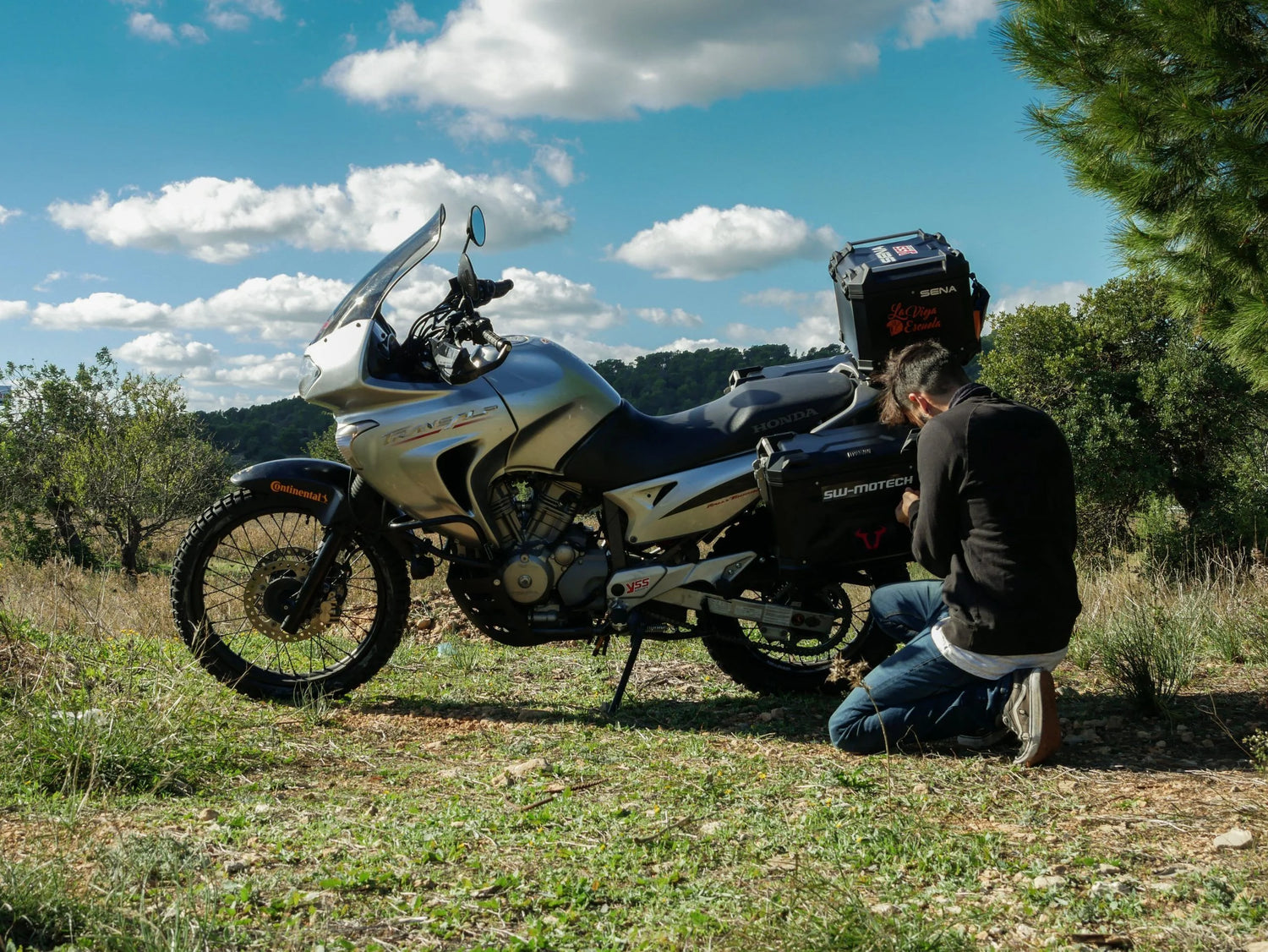
- Helmet: I use Shoei's Hornet ADV. I have chosen a closed one for the security it provides. It is very similar to a full-face one but has a chin guard and upper visor . It is actually a hybrid between a full road bike and an enduro bike. The advantages are that, while maintaining the safety of a full-face helmet, it allows you to breathe better in case of suffocation, it has a visor that protects you from the sun and branches and offers a wider field of vision.
- Jacket: it is probably the most useful thing after the helmet, so it is important to choose well based on each person's needs. Since in my case I am going to drive through very cold, very hot, rainy and dry situations, I need a jacket that is very versatile , that is why I have chosen the Nabor model from the iXS brand. It has good protection and incorporates the Gore-Tex membrane , which gives it excellent waterproofing without sacrificing breathability. It has three removable layers, making it perfect for all types of weather situations.
- Gloves: I travel with two pairs. Some are the "Cuba" from iXS for the cold and mid-season . They are gloves with great touch and excellent protection. The others, the "Fresh" , are ideal on hot days . Although they are very ventilated gloves, they do not have worse protection. For very cold situations I have some thin gloves that fit inside the Cuba, giving them a few more degrees.
- Pants: I wear the “Harron” model from iXS . They are the perfect complement to the Nabor jacket, also incorporating Gore-Tex and three removable layers . I find them very comfortable and adaptable to countless situations.
- Boots: to ride tracks it is important to use tall and rigid boots, but not as rigid as motocross boots. My model is the iXS "Trail" . At the moment they are holding up well and are quite comfortable to walk on.
LUGGAGE
It is a difficult task to distinguish between necessity and whim. Space is very limited on a motorcycle, so you have to think a lot about what to take and what to leave on the ground.
ELECTRONICS
- Computer: there are ultralight models ideal for traveling, it's just not my case. I carry a normal laptop , with which I edit my videos. It also helps me if I want to carry out procedures and save photos. It's the first trip I've brought a computer on, so we'll see if it was a good idea.
- Power-bank : it is a small external battery with which to charge electronic devices. As if this were not enough, it makes it possible to start the motorcycle in case its battery does not want to.
- Cameras : I have a mirrorless type camera . Theoretically, for the same price, the quality is slightly inferior to a traditional SLR. As the years go by, they evolve and it is believed that they will soon be on par, or even surpass them. Once again, due to space issues, it is a type of camera that fits my needs. By not having so many crystals inside, it is more resistant to knocks and the constant rattling of the motorcycle.
- Action camera: I have chosen a GoPro sports camera , for its versatility and resistance . Everyone knows them and we have seen what they are capable of doing.
- Drone: A Mavic Pro , one of my most expensive investments. It is incredibly small, given its characteristics. The quality of the camera is acceptable and it almost fits in a pocket . I consider it totally dispensable, but I like it a lot and I think it can provide a different vision.
- Intercom : I have opted for the Sena 10C . I use it, above all, to listen to music while driving. On the other hand, this model incorporates a video camera . The advantage it has is that it allows you to record spontaneous situations that would not otherwise be possible, it is quite small and is well integrated into the helmet.
- GPS: I only use Maps on my mobile . Without internet, it only shows you the map and a small blue dot that is you. I prefer this to other alternatives, as a browser takes away the need to ask questions, meet people, and immerse yourself in the country. By preventing you from getting lost, the browser also prevents certain adventures.
- Mini compressor : I found one online that was very mini and for an affordable price. It is supposed to be able to inflate a motorcycle tire in a few minutes and works on a battery or connected to a power outlet/cigarette lighter. I have certain doubts, it remains to be seen how it works...
TOOLS
Again, due to space issues, I cannot carry everything I would like, so I have had to make a selection of tools . I only carry the ones that are most used on my motorcycle.
CLOTHES
Until the free space is filled , just enough to last a week or two until having to do the laundry.
OTHERS
First aid kit, slackline , diving goggles.
DOCUMENTATION AND VACCINES
For me, bureaucracy is the most boring and exasperating topic of all: slow, difficult, not very humane and often corrupt. But it's part of the game, and nowadays you need papers for everything and traveling by motorcycle was no different. I am lucky to live in a so-called “rich” country. This gives me the privilege of being allowed to enter practically any country in the world simply for being born here. Unfortunately, there are still many borders that are not two-way.
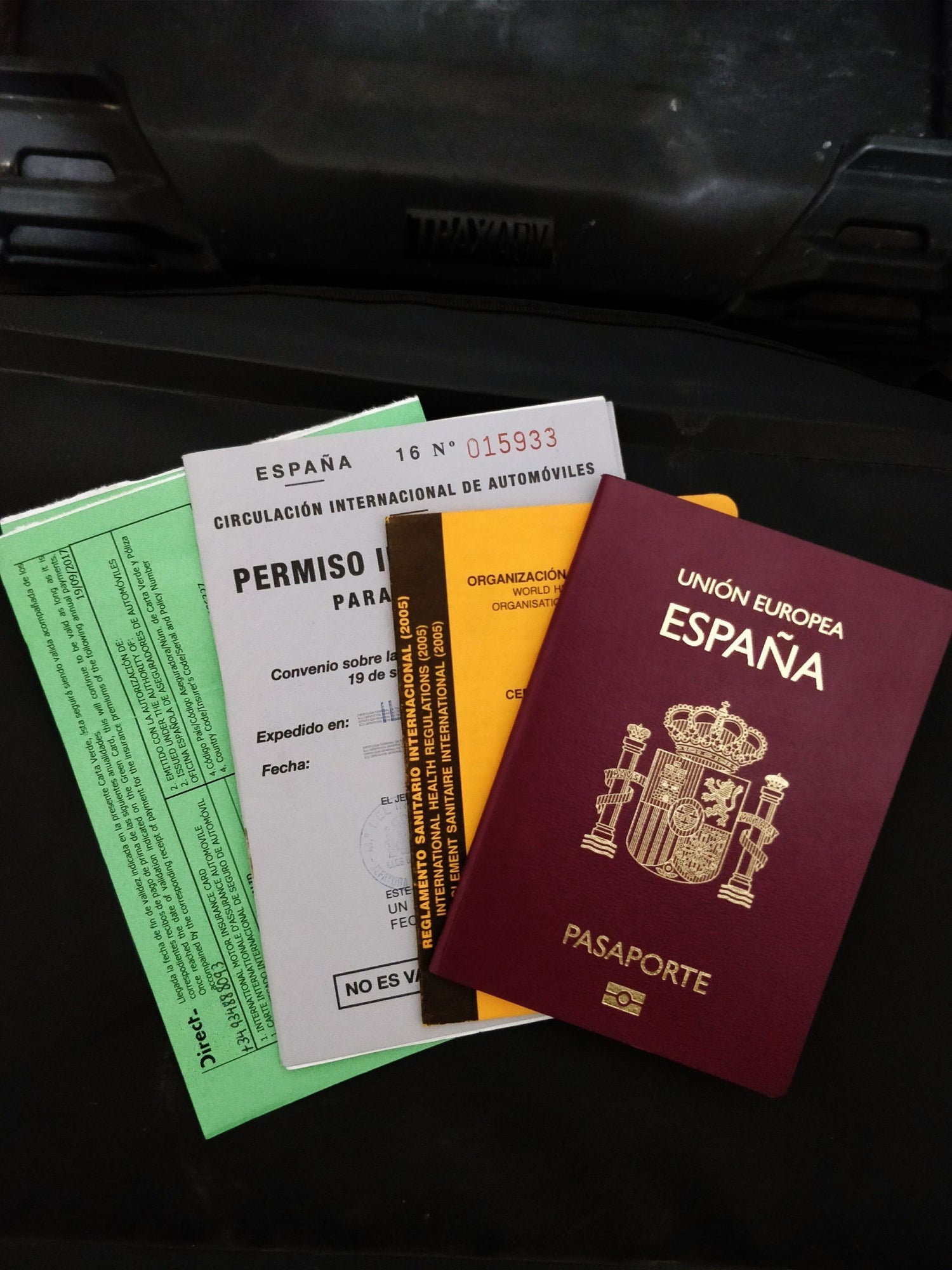
- Passport : logically it must be in order and have sufficient months of validity. Many countries ask you for at least six. You must also have enough blank sheets to be able to complete the trip.
- Visas : I don't like the idea of having to carry visas prepared from home, because I don't know what dates I'm going to arrive or if I'm going to divert the trip to another country. What I am going to do is take them out at the border itself , but there are countries that do not allow it. In this case they can normally be taken out in the capital of a neighboring country . We'll see how it goes. I prefer to have total freedom even if it means some hassle along the way.
- Carnet de Passages en Douane (CDP) : this carnet is something like a temporary import permit for the motorcycle , to ensure that you are not going to sell it in some country. It is necessary if you are looking to cross certain countries with your own vehicle. It is controversial because, to get it, you must go to a bank and deposit a large amount of money. This depends on the value of your vehicle, although the minimum is 2,780 euros. They give you a guarantee with its corresponding management and maintenance costs (banks have to live on something) and, if you want to recover that guarantee, you have to return the CDP with all the entry and exit stamps of the country.
The card is valid for one year, and its cost ranges between €250 and €280 , depending on the number of countries you are going to visit. It has quite a few risks. For example, if you forget, you don't get the exit stamp from a country, your motorcycle is stolen or you have a breakdown and you can't continue, you automatically lose your endorsement. The only organization that manages it in Spain is RACE . I have not found any alternative or a way to avoid having to obtain the license, since on my route there are several countries in which it is "essential" and many others in which it is highly recommended.
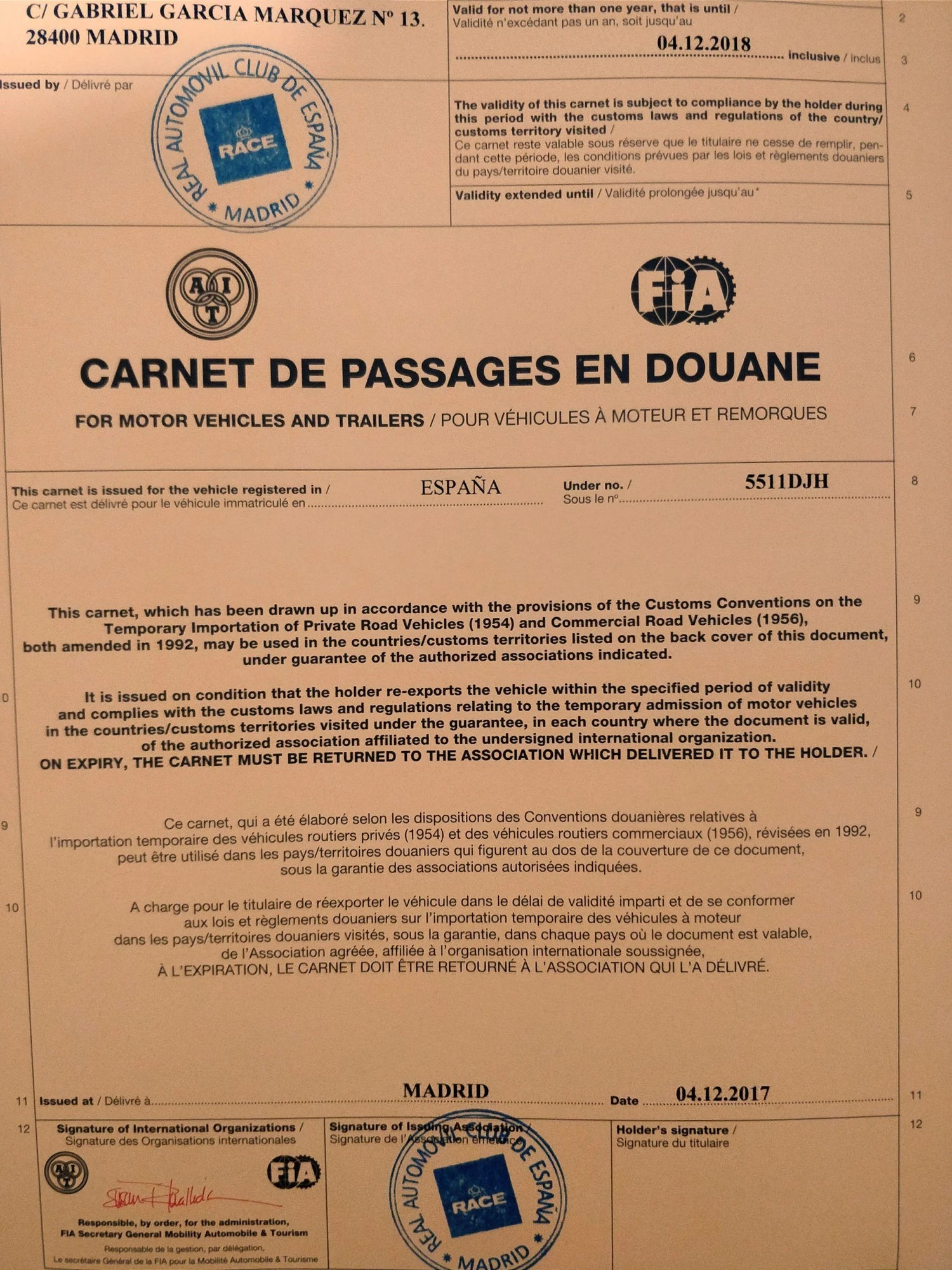
- International driving license : it costs approximately €10, it is processed immediately at the DGT , it allows you to drive through any country and lasts one year . From my own experience, in many countries they don't have the slightest idea what it is. You could show them your library card with conviction and it would be of no use to them.
- Travel insurance: essential on an adventure of this style. It is valid for one year and covers you in case of illness or accident along the way. If you don't get it, healthcare can be very expensive in some countries.
- Motorcycle insurance: the one I already have in Spain. Our insurance covers a large part of Europe. Even Türkiye and Morocco, if I'm right. From there you have to take out insurance for days in the countries you are visiting.
- Vaccines: To cross certain borders it is necessary to be vaccinated, especially against yellow fever and meningococcal meningitis . You must prove it by presenting the international vaccination card, which is available at Foreign Health . There are others that are recommended in many countries, especially in South America, Africa and Southeast Asia. «Malarone» . It is something like a shock treatment in case you have the first symptoms of malaria until you reach a place where you can be treated. Each person must decide whether or not to get vaccinated and what they have or want to get vaccinated for. All depending on where you are going and how long you will be traveling.
Lastly, I bring photocopies of the documents. They really have no value, not even if they were certified. In any case, I hope that, if I mess up, they will be of some use to me...
